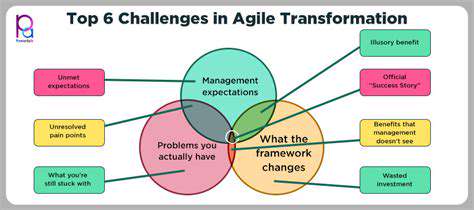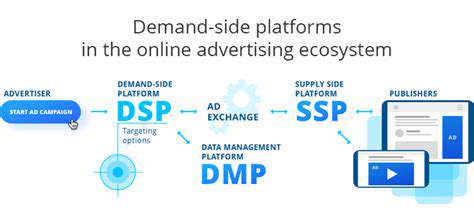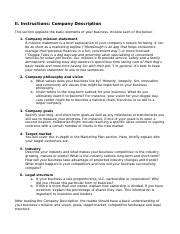CTV vs Traditional TV Advertising: A Comparative Analysis
Reach and Frequency
Traditional television advertising boasts a massive reach, potentially exposing your message to a vast audience across demographics. This broad reach allows for high frequency, meaning your advertisement can be seen repeatedly by viewers, increasing brand awareness and memorability. A well-placed commercial during a popular show can expose your message to millions of potential customers, significantly impacting brand recall and market share.
Targeting Capabilities
While traditional TV advertising excels at broad reach, its targeting capabilities are less precise than newer digital methods. However, networks offer demographic and geographic targeting options. For example, ads can be placed during programs known to attract specific age groups or locations. Although not as granular as digital targeting, this level of selectivity allows brands to reach audiences with a higher degree of relevance than simply casting a wide net.
Established Credibility and Trust
For many consumers, traditional television still holds a certain level of credibility and trust. Years of viewing and engaging with television programming have established a level of familiarity and trust in the medium. Consumers often associate traditional TV ads with established brands and high-quality products, which can contribute to the overall perceived value of the advertised goods or services.
Cost-Effectiveness (Potential)
The cost-effectiveness of traditional TV advertising can vary significantly depending on the specific program, time slot, and geographic targeting. While some spots can be incredibly expensive, particularly during prime-time slots, strategically placed ads can potentially offer a high return on investment (ROI) if the target audience is receptive to the message. The potential for massive reach can justify the cost for certain products or services.
Measurable Results (Limitations)
Traditional TV advertising, while impactful, faces challenges in accurately measuring the direct impact of campaigns. Determining precise metrics like website clicks or sales conversions is more difficult than with digital advertising. While viewership data and ad impressions are available, attributing specific sales or actions solely to a TV commercial can be complex and sometimes inaccurate.
Creative Flexibility
Traditional TV commercials offer a high degree of creative freedom. From elaborate narratives to dynamic visuals and compelling soundtracks, television ads can be highly engaging and memorable. The combination of sight, sound, and motion allows for powerful storytelling and impactful brand messaging. This flexibility can be a significant advantage for advertisers aiming to create a strong emotional connection with their target audience.
Accessibility to Diverse Audiences
Traditional TV advertising has a broad reach, often extending to diverse audiences that might not be easily accessible through other channels. Television signals can reach homes across different socioeconomic backgrounds, geographic locations, and cultural groups, offering a potential for broader market penetration and engagement with diverse segments. This wide spectrum of accessibility can be a key factor in achieving a comprehensive marketing strategy.
Synthetic biology is a rapidly evolving field that combines engineering principles with biological systems. It aims to design and construct novel biological parts, devices, and systems, and to redesign existing biological systems for useful purposes. This interdisciplinary approach leverages our understanding of biology to create solutions in various sectors, from medicine to energy production.
Cost Comparison and Budget Allocation

Initial Investment Costs
Understanding the upfront costs is crucial for any project. This includes not only the purchase price of equipment or materials but also any associated setup fees, transportation costs, and necessary permits. Careful budgeting at this stage prevents unexpected financial strain later on. Detailed cost breakdowns are essential for accurate projections and informed decision-making.
Furthermore, consider the potential for unforeseen expenses. Contingency planning should be incorporated into the budget to account for unexpected issues or changes that may arise during the project. This proactive approach ensures the project remains on track, even when unexpected challenges occur. Having a buffer for unexpected costs is wise financial planning.
Operational Expenses
Ongoing operational costs are equally important to consider. These expenses can include utilities, maintenance, repairs, and staffing costs, if applicable. Analyzing these expenses over the project's lifespan is essential for creating a realistic budget.
Regular maintenance and preventative measures can significantly reduce costly repairs down the road. Predicting and budgeting for these recurring expenses are vital to long-term financial health. Properly forecasting these costs allows for sustainable project management and reduces potential financial surprises.
Recurring Costs
Recurring costs, such as subscriptions, licenses, and software updates, often get overlooked. These expenses can quickly add up and significantly impact the overall budget. It's critical to factor these recurring expenses into the long-term projections. A clear understanding of these costs helps in making informed decisions about the project's longevity and financial viability.
Detailed analysis of recurring costs can help identify potential cost-saving opportunities. Evaluating the pricing structure of various options, exploring alternative providers, and negotiating contracts can help significantly reduce the overall financial burden over time.
Contingency Planning
A comprehensive cost comparison must include a contingency plan. Unexpected events, such as equipment malfunctions, material shortages, or delays, can significantly impact the project's timeline and budget. Building a buffer into the budget ensures the project can withstand unforeseen circumstances. This proactive approach safeguards against financial strain and maintains project momentum.
This contingency fund should be allocated strategically to address various potential issues. Careful consideration should be given to the likelihood of each scenario and the associated costs to ensure the fund is sufficient to cover potential disruptions. This planning reduces the risk of project failure due to financial constraints.
Budget Allocation Strategies
Effective budget allocation strategies are crucial for optimizing resource utilization. Prioritization of tasks and expenses based on their impact on the project's success is essential. A well-defined allocation process ensures that resources are directed towards activities that deliver the greatest value. Prioritizing tasks based on their potential impact directly affects the project's outcome.
This process should also consider factors like project scope, timelines, and resource availability. Careful analysis of these factors helps in creating a budget that is both realistic and attainable. A well-structured allocation strategy is key to project success, minimizing risks, and maximizing profitability.
Read more about CTV vs Traditional TV Advertising: A Comparative Analysis
Hot Recommendations
- Attribution Modeling in Google Analytics: Credit Where It's Due
- Understanding Statistical Significance in A/B Testing
- Future Proofing Your Brand in the Digital Landscape
- Measuring CTV Ad Performance: Key Metrics
- Negative Keywords: Preventing Wasted Ad Spend
- Building Local Citations: Essential for Local SEO
- Responsive Design for Mobile Devices: A Practical Guide
- Mobile First Web Design: Ensuring a Seamless User Experience
- Understanding Your Competitors' Digital Marketing Strategies
- Google Display Network: Reaching a Broader Audience










